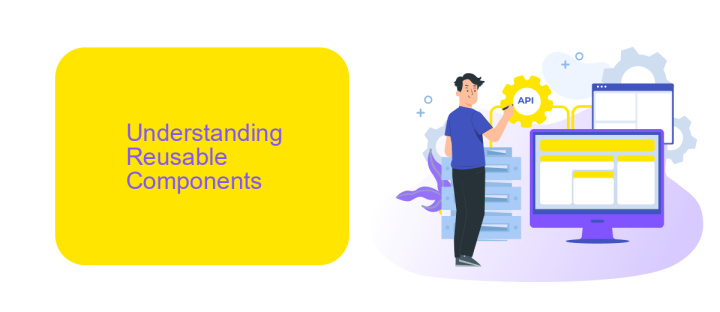UiPath What is a Reusable Component
In the realm of robotic process automation (RPA), UiPath stands out as a leader, offering innovative solutions to streamline workflows. One of its standout features is the concept of reusable components. These are pre-built, customizable modules that can be easily integrated into various automation projects, saving time and enhancing efficiency. This article explores what reusable components are and how they can revolutionize your automation strategy.
# Introduction
In the ever-evolving landscape of automation, UiPath stands out as a leading platform enabling businesses to streamline their operations. One of the key features that make UiPath so powerful is its support for reusable components. These components are pre-built, configurable modules that can be used across multiple automation projects, significantly reducing development time and ensuring consistency.
- Efficiency: Reusable components save time and effort by eliminating the need to build automation from scratch.
- Consistency: Using standardized components ensures uniformity across different automation projects.
- Scalability: Easily scalable solutions as new components can be incorporated into existing workflows.
Integrating these reusable components with other services can further enhance their functionality. For instance, using ApiX-Drive, a service designed to facilitate seamless integrations, can help you connect UiPath with various other applications effortlessly. This not only boosts the capabilities of your automation but also ensures that your workflows are as efficient and effective as possible.
Understanding Reusable Components

Reusable components in UiPath are pre-built modules or functions that can be used across multiple automation projects. These components help in reducing development time and ensuring consistency across different workflows. By leveraging reusable components, developers can focus on building more complex and value-added tasks rather than reinventing the wheel for common functionalities. This approach not only enhances efficiency but also promotes standardization and best practices within the automation ecosystem.
Integrating reusable components with various services can further extend their utility. For instance, using a service like ApiX-Drive can streamline the process of setting up integrations. ApiX-Drive allows users to connect different applications and automate data transfers without extensive coding. By incorporating such services, UiPath users can enhance their automation projects with seamless data integration, making the entire process more robust and scalable. This combination of reusable components and powerful integration tools ensures a more efficient and effective automation strategy.
Benefits of Using Reusable Components

Reusable components in UiPath offer numerous advantages that significantly enhance the efficiency and effectiveness of automation workflows. By leveraging these pre-built, modular pieces of code, organizations can streamline their development processes and ensure consistency across various projects.
- Time Efficiency: Reusable components save development time by allowing teams to implement pre-tested functionalities without starting from scratch.
- Cost Reduction: By minimizing the need for redundant coding, organizations can reduce costs associated with development and maintenance.
- Consistency: Utilizing standardized components ensures uniformity across different automation projects, reducing errors and improving reliability.
- Scalability: Reusable components make it easier to scale automation efforts, as they can be easily integrated into new workflows.
- Integration: Services like ApiX-Drive facilitate seamless integration of reusable components with various applications and systems, enhancing overall functionality.
Implementing reusable components in UiPath not only optimizes the development cycle but also promotes a more organized and maintainable codebase. This approach allows businesses to focus on innovation and strategic initiatives, rather than getting bogged down by repetitive coding tasks.
Best Practices for Creating Reusable Components

Creating reusable components in UiPath not only saves time but also ensures consistency and reliability across your automation projects. To achieve this, it's essential to follow certain best practices that facilitate the development of high-quality, maintainable components.
First, focus on modularity. Break down your automation processes into smaller, manageable parts that can be independently developed, tested, and maintained. This makes it easier to isolate and fix issues without affecting the entire system.
- Standardization: Use consistent naming conventions and coding standards to make your components easily understandable and accessible to other developers.
- Documentation: Provide clear and comprehensive documentation for each component, detailing its purpose, inputs, outputs, and any dependencies.
- Version Control: Utilize version control systems to track changes and manage different versions of your components effectively.
- Integration: Leverage tools like ApiX-Drive to seamlessly integrate your components with other services and applications, enhancing their functionality and scalability.
Finally, always test your components thoroughly before deploying them. Rigorous testing ensures that your components perform as expected and can handle various scenarios, reducing the risk of errors in your automation workflows. By adhering to these best practices, you can create robust, reusable components that significantly enhance your UiPath projects.
Conclusion
In summary, reusable components in UiPath significantly enhance the efficiency and scalability of automation projects. By creating modular, well-defined components, organizations can save time, reduce errors, and ensure consistency across different workflows. This approach not only streamlines development but also facilitates easier maintenance and updates, as changes made to a single component can be propagated throughout all workflows that utilize it.
Moreover, integrating these reusable components with services like ApiX-Drive further extends their functionality and interoperability. ApiX-Drive simplifies the process of connecting various applications and services, allowing for seamless data transfer and automation across platforms. This integration capability ensures that organizations can leverage their existing tools and systems, thereby maximizing the value derived from their automation investments. Overall, the strategic use of reusable components and integration services like ApiX-Drive empowers businesses to build robust, adaptable, and efficient automation solutions.
- Automate the work of an online store or landing
- Empower through integration
- Don't spend money on programmers and integrators
- Save time by automating routine tasks
FAQ
What is a reusable component in UiPath?
How can I create a reusable component in UiPath?
What are the benefits of using reusable components in UiPath?
Can reusable components be shared with other team members?
How can I integrate reusable components with other systems or services?
Strive to take your business to the next level, achieve your goals faster and more efficiently? Apix-Drive is your reliable assistant for these tasks. An online service and application connector will help you automate key business processes and get rid of the routine. You and your employees will free up time for important core tasks. Try Apix-Drive features for free to see the effectiveness of the online connector for yourself.


